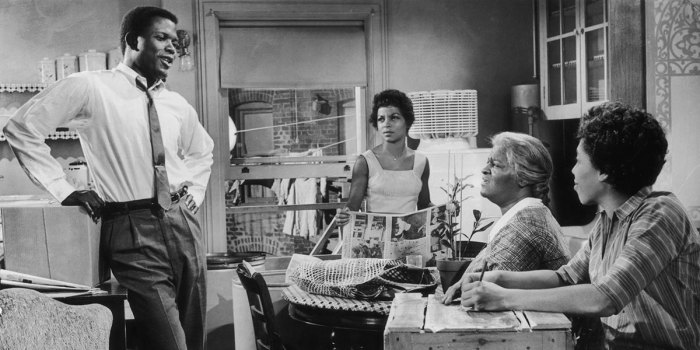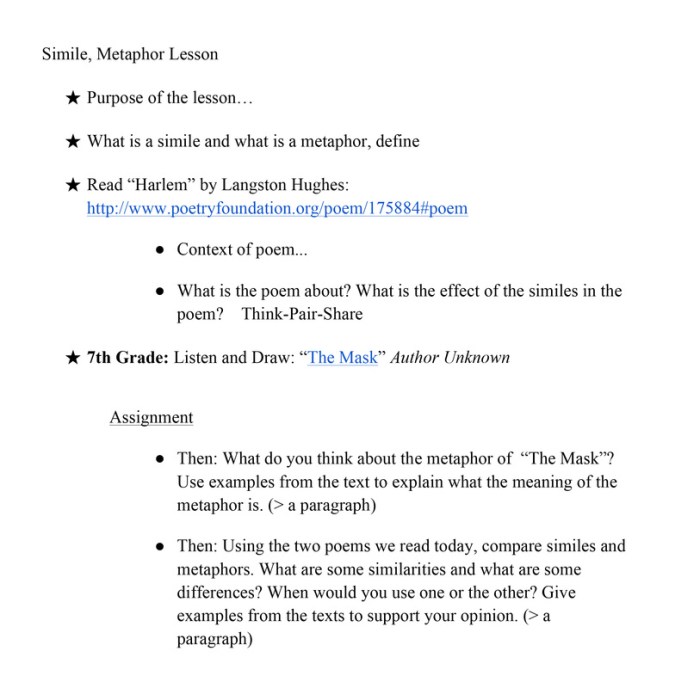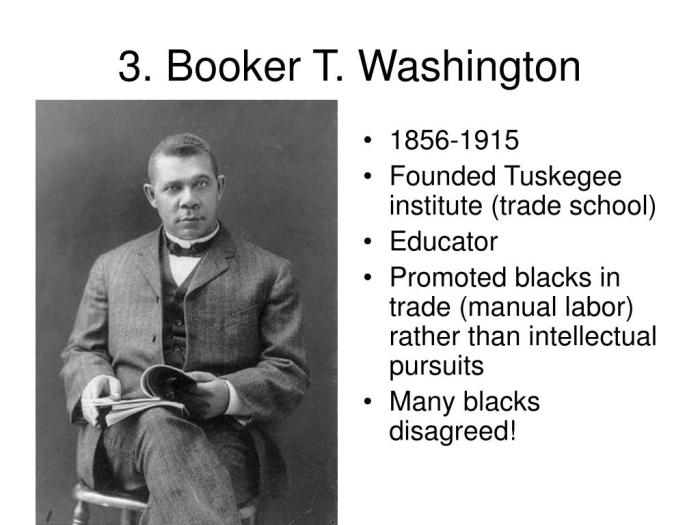Metaphors in Raisin in the Sun dance across the stage, painting vivid imagery and illuminating the profound themes of growth, identity, and the human experience. From the burgeoning potential of the Younger family to the contrasting forces of light and darkness, these metaphorical threads weave a rich tapestry that invites us to delve into the depths of this timeless play.
As we explore the metaphors of Raisin in the Sun, we uncover the characters’ struggles, aspirations, and connections to the natural world. Through everyday objects and the very fabric of language itself, Lorraine Hansberry crafts a world that resonates with universal truths, inviting us to reflect on our own journeys and the enduring power of hope.
Metaphors of Growth and Development

Lorraine Hansberry’s A Raisin in the Sunis a play rich in metaphors that represent the growth and development of the Younger family. These metaphors contribute to the play’s themes of hope and resilience, as they suggest that even in the face of adversity, the family is capable of change and progress.
The Plant Metaphor
One of the most prevalent metaphors in the play is that of the plant. The Younger family is often compared to a plant, which is a symbol of growth and new life. This metaphor is particularly evident in the scene where Walter Lee plants a seed in a pot.
The seed represents the family’s hopes and dreams for the future, and Walter’s act of planting it symbolizes his faith in the family’s ability to overcome adversity and achieve their goals.
The Journey Metaphor
Another metaphor that is used to represent the Younger family’s growth and development is that of the journey. The family’s move from their cramped apartment to a new home in a white neighborhood is a physical journey, but it is also a symbolic journey that represents the family’s progress towards a better life.
The journey is not without its challenges, but the family’s determination to succeed helps them to overcome the obstacles they face.
The Phoenix Metaphor
The phoenix is a mythical bird that is said to rise from its own ashes after it has been burned. This metaphor is used to represent the Younger family’s ability to overcome adversity and start anew. After the family loses their money in a scam, they are forced to start over.
However, they do not give up on their dreams, and they eventually find a way to achieve their goals.
Metaphors of Light and Darkness: Metaphors In Raisin In The Sun

The play “A Raisin in the Sun” employs metaphors of light and darkness to symbolize the characters’ struggles and aspirations. Light represents hope, opportunity, and a brighter future, while darkness symbolizes oppression, despair, and obstacles.
Light as a Symbol of Hope
- The Younger family’s dream of moving into a new home is associated with light. The new house represents a brighter future and a chance to escape their cramped and rundown apartment.
- Walter Lee Younger’s business venture is also associated with light. He believes that starting his own business will bring him financial success and independence, which he sees as a way to break free from the darkness of poverty.
Darkness as a Symbol of Oppression
- The Younger family’s apartment is described as “dark and gloomy.” This darkness reflects the oppressive conditions in which they live, including poverty, discrimination, and lack of opportunity.
- Walter Lee Younger’s frustration and anger are also associated with darkness. He feels trapped in a life of poverty and sees no way out, which plunges him into a state of despair and darkness.
Metaphors of Nature
Metaphors of nature are used throughout A Raisin in the Sunto connect the characters to their environment and to universal human experiences. These metaphors often draw on images of plants, animals, and the weather to create a vivid and evocative sense of the characters’ lives and struggles.
One of the most important metaphors of nature in the play is the image of the sun. The sun is a symbol of hope and renewal, and it is often used to represent the characters’ dreams for a better future.
In the opening scene of the play, Walter Lee Younger talks about how he wants to “make a garden in the sun” for his family. This image of the garden represents Walter’s hopes for a better life for himself and his family.
He wants to create a place where they can grow and thrive, and he believes that the sun will help them to achieve their dreams.
Another important metaphor of nature in the play is the image of the tree. The tree is a symbol of strength and resilience, and it is often used to represent the characters’ ability to overcome adversity. In the play, the Younger family is faced with many challenges, but they always manage to find a way to persevere.
The tree is a reminder that even in the darkest of times, there is always hope for growth and renewal.
The metaphors of nature in A Raisin in the Sunare powerful and evocative. They help to create a vivid and memorable sense of the characters’ lives and struggles, and they remind us of the universal human experiences of hope, renewal, and resilience.
The Metaphor of the Sun, Metaphors in raisin in the sun
The sun is a powerful symbol of hope and renewal. It is often used in literature to represent the characters’ dreams for a better future. In A Raisin in the Sun, the sun is used to symbolize Walter Lee Younger’s hopes for a better life for his family.
Walter wants to create a garden in the sun for his family, a place where they can grow and thrive. The sun is a reminder that even in the darkest of times, there is always hope for a brighter future.
The Metaphor of the Tree
The tree is a symbol of strength and resilience. It is often used in literature to represent the characters’ ability to overcome adversity. In A Raisin in the Sun, the Younger family is faced with many challenges, but they always manage to find a way to persevere.
The tree is a reminder that even in the darkest of times, there is always hope for growth and renewal.
Metaphors of Objects

Lorraine Hansberry’s A Raisin in the Sunis replete with metaphors that use everyday objects to represent abstract concepts or emotions. These metaphors enhance the play’s realism and accessibility by grounding its themes and characters in the familiar experiences of everyday life.
Symbolic Objects
- The Raisin:The play’s title refers to a raisin in a glass of water, which Walter Lee Younger compares to his family’s struggle for a better life. Just as the raisin sinks to the bottom of the glass, the Youngers face obstacles that seem insurmountable.
- The Piano:The piano represents the family’s hopes and dreams. It is a symbol of their desire for a better life, but it is also a reminder of their financial struggles.
- The Apartment:The apartment represents the Youngers’ hopes for a new beginning. It is a symbol of their desire for a better life, but it is also a reminder of their financial struggles.
Metaphors of Language

Metaphors of language are used in A Raisin in the Sun to explore the themes of identity and communication. These metaphors reveal the characters’ struggles to express themselves and connect with others.
The Power of Language
The play depicts language as a powerful tool that can both empower and disempower individuals. For example, Walter’s forceful speeches inspire his family, while Beneatha’s intellectual language isolates her from others. These contrasting examples highlight the complex relationship between language and identity.
The Limits of Language
The play also suggests that language has limitations. The characters often struggle to find the right words to express their thoughts and feelings. This is evident in Walter’s inability to articulate his dreams for the future and Mama’s difficulty in comforting her troubled son.
These moments reveal the limitations of language and the challenges of communication.
Metaphors in “Raisin in the Sun” paint vivid pictures of the characters’ struggles and aspirations. Just as Talia, in the moving box article ( talia is packing a moving box ), packs away her belongings to embark on a new chapter, so too do the characters in “Raisin in the Sun” navigate their own metaphorical moving boxes, filled with dreams and burdens.
Metaphors in Stage Directions
Stage directions in A Raisin in the Sunoften employ metaphorical language to convey the emotional states of characters or the atmosphere of a scene.
Metaphorical Stage Directions
| Stage Direction | Metaphorical Interpretation |
|---|---|
| “The Younger family sits in darkness.” | The family is in a state of despair and hopelessness. |
| “Walter paces the floor like a caged animal.” | Walter feels trapped and frustrated by his circumstances. |
| “Beneatha’s eyes light up with excitement.” | Beneatha is hopeful and optimistic about the future. |
| “The walls seem to close in on the family.” | The family feels suffocated by their living conditions. |
| “The sun streams into the room, casting a warm glow on the family.” | The family experiences a moment of hope and happiness. |
Metaphors in Character Dialogue
Throughout A Raisin in the Sun, characters frequently employ metaphors to express their emotions, experiences, and aspirations. These metaphors provide deeper insights into the characters’ perspectives and motivations.
The following are some notable examples of metaphors used by specific characters:
Walter Younger
- “I’m gonna make it big. I’m gonna be a rich man. I’m gonna have my own business. I’m gonna be the head of my own family.”This metaphor reveals Walter’s ambitious and materialistic nature. He envisions his success in terms of wealth and power.
- “I’m like a bear in a trap. I’m just waiting for the right moment to break free.”This metaphor expresses Walter’s frustration and pent-up anger. He feels trapped in his current situation and yearns for liberation.
Beneatha Younger
- “I want to be an African queen. I want to be a warrior. I want to be a poet.”This metaphor reflects Beneatha’s strong and independent spirit. She desires a life of adventure, freedom, and self-expression.
- “The world is a cage. And I’m just a bird trying to fly.”This metaphor conveys Beneatha’s sense of confinement and her struggle to break free from societal expectations.
Ruth Younger
- “My life is like a broken record. It keeps playing the same old song.”This metaphor expresses Ruth’s feelings of monotony and dissatisfaction with her life.
- “I’m like a tree that’s been uprooted. I’m just trying to find my place in the world.”This metaphor reveals Ruth’s resilience and her search for stability amidst change.
Mama Younger
- “My house is my castle. And I’m the queen.”This metaphor symbolizes Mama’s pride in her home and her role as the matriarch of the family.
- “The future is like a big, dark forest. And we’re all just trying to find our way through it.”This metaphor conveys Mama’s uncertainty and apprehension about the future.
FAQs
What is the significance of the plant metaphor in Raisin in the Sun?
The plant metaphor symbolizes the Younger family’s resilience and determination to thrive despite adversity, just as a plant can flourish in even the harshest conditions.
How does the metaphor of light and darkness reflect the characters’ experiences?
Light represents hope, opportunity, and a brighter future, while darkness represents the challenges and obstacles the characters face in their pursuit of the American Dream.